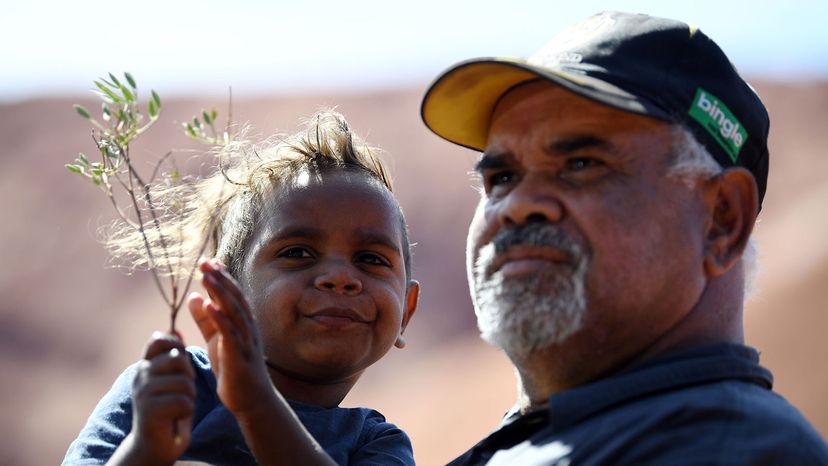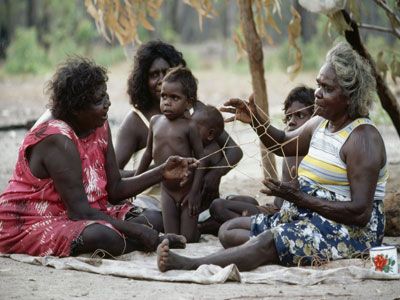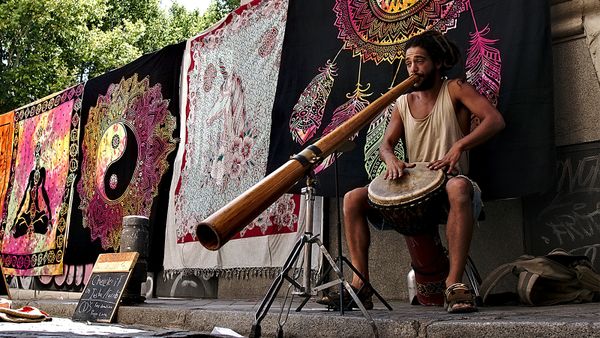
The Aboriginal people of Australia were the first people to set foot on the continent, somewhere between 40,000 and 60,000 years ago. The Aboriginal Australians' creation story describes their arrival in terms of the Dreamtime, the beginning of time, when the spirits created the world.
During Dreamtime, spirits rose from below the earth and transformed into all the natural elements you see in Australia today – rivers, lakes, mountains, hills and caves. The spirits literally make up the land. Aboriginal Australians see these spirits in much the same way as Christians view God or Muslims view Allah. However, they believe that these spirits are alive within the land of Australia. Because of this, Aboriginal Australians view the land as sacred and treat it as such.
Advertisement
The dreamings, or stories, of the Dreamtime are also considered sacred, and they're kept secret from the outside world. Elders draw these stories in a series, called a dreaming trail, using symbols. Young men then learn what the symbols mean and how to translate them so they can pass the history along to the next generation. Many Aboriginal Australians consider the dreamings to be the absolute truth – an unquestionable recording of history.
The scientific explanation for how Aboriginal people arrived in Australia is simple: They walked. Within the last decade, studies have proposed the possibility that all humans came from Africa within the last 200,000 years [sources: The Independent, Lewis]. A group of geneticists at the University of Cambridge in England built on that research by studying the DNA of Aboriginal Australians to determine when they arrived in Australia and from where.
According to Dr. Toomas Kisivild and his team, the Aboriginal people walked from Africa onto Eurasia. From there, they spread from India along the coastlines of Southeast Asia, where they then traveled over a land bridge connecting Australia to Asia [source: The New York Times]. Once the seas rose and covered the land that connected the continents, indigenous Australians were isolated for thousands of years.
What was life like for them, and how did that change with an influx of English settlers? How has the struggle for civil rights in Australia compare to what's happened in other countries? Read on to learn how much has changed in the last few centuries.


